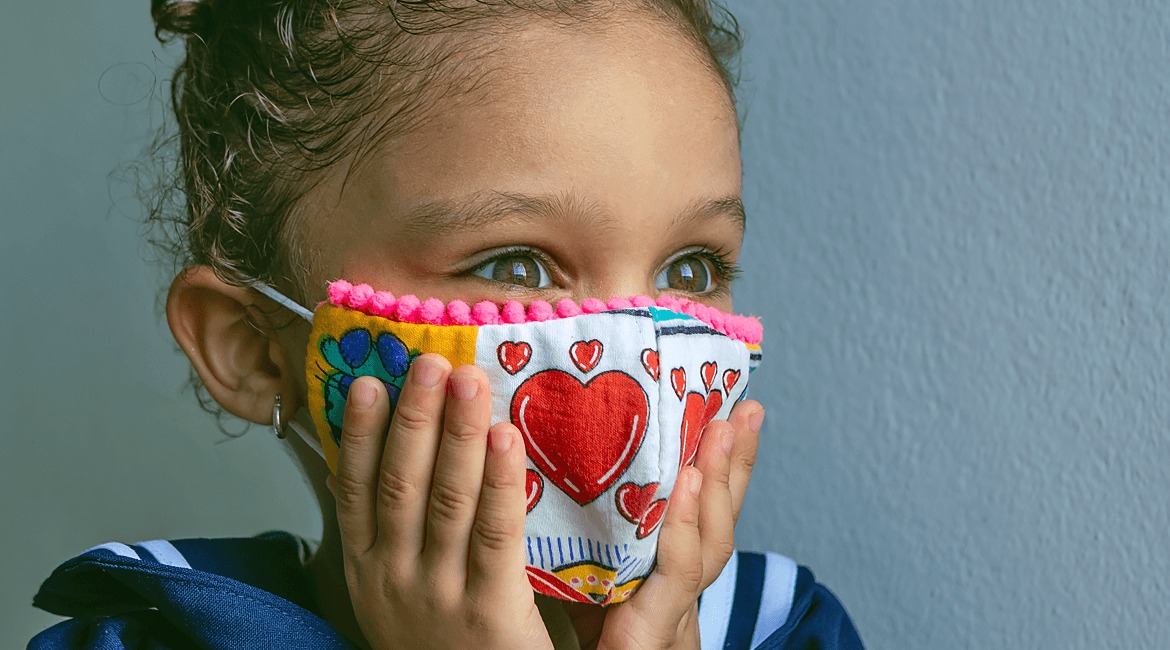With the widespread of viruses and germs, protecting toddlers and following safety precautions is recommended.
Wearing face covering, such as face masks, is one of the several protection tools and is essential in reducing viruses’ transmission.
If you wonder if toddlers should have personal face coverings, the short answer is Yes.
However, consider factors such as your child’s age, ability to use a face mask safely, and contact with sick people.
Even as face masks are suddenly an essential kid accessory, getting a child to wear this protection tool feels like a challenge.
Reasons for Your Toddler to Use a Face Mask
Face masks stop the spread of infectious diseases and germs, especially during the event of a global pandemic.
Masks help limit the spread of germs and viruses from one person to another by forming a barrier to prevent the virus from entering or exiting people’s airways.
For babies and toddlers below two years, doctors recommend not wearing them face masks because their nostrils are too small.
However, it is safe and essential for any child who is two years, and above that, they use a face mask.
Children aged from two years wear masks because they can host viruses within their bodies and not feel sick.
Also, toddlers can be asymptomatic and transmit germs before showing any signs and symptoms.
7 Steps to Follow When Selecting a Toddler’s Face Mask
There are different varieties and types of masks available in stores.
When choosing a face mask for your toddler, apart from buying based on material, or price, it’s most important to buy a face covering that meets the CDC’s guidelines.
Here are seven vital steps to follow when purchasing face masks for your little one.
1. Ensure the Face Mask is a Good Fit
For maximum protection, your toddler’s masks should fit snugly and comfortably on their face without constriction.
The mask should cover your little ones’ noses and perfectly rest across the bridge of their nose and cheeks.
Also, ensure the mask sits comfortably under your child’s chin and hugs the edges of their face and cheeks without any noticeable gap.
2. Does the Mask Stay in Place When Worn?
Ensure the masks you get for your child are easy to put on and tightly secured by elastic ties or ear loops.
The ear loops make the mask securely fit behind a child’s ear and prevent them from fidgeting with it.
3. Consider Opting for Cloth Face Masks
Toddlers are playful and tend to tear their clothes, which tends to happen with their masks.
Opting to purchase cloth face masks will last longer during their playdates, day-care, and school time than the disposable mask option.
Note, the cloth masks must have multiple fabric layers, are easily washable, and retain their shape without damage after laundering.
4. Always Go for Your Child’s Comfort
Does your toddler have allergies or sensitivities to certain fabrics?
When choosing face masks, always consider your child’s preference in fabrics and cloth textures and apply.
5. Breathability
Do not choose face masks that do not allow for unrestricted breathing in toddlers.
Face coverings made out of multi-layered cotton, cotton-polyester blends, or linen provide easy air passage.
Avoid purchasing face masks made from fleece, as fleece may not give toddlers as much air filtration as other multi-layered face masks.
6. Look for Protective Features
For extra protection for your child, additional mask features like a nonwoven filter layer, disposable vents, or a nose piece are most covering parents’ personal preference.
Although these additional protection features are unnecessary, it is probably the best option to choose if it helps your toddler with mask acceptance.
7. Kid-friendly Moisture Wicking Masks
Your child will need colorful masks designed for kids that keep them cool by pulling moisture from their faces.
Masks made with soft, stretchy materials like polyester can achieve this. Also, face masks made from fabrics with bright colors are more likely to excite toddlers.

Easy Ways to Encourage Toddlers to Use a Face Mask
Face masks can only offer protection to your child when it is worn.
It is tasking for parents to get toddlers to leave their masks on their faces because kids are very active and fidgety.
If your baby keeps removing their mask or throw tantrums, try these recommended tips below to help them adjust to putting a cover over their nose and mouths.
- Children look up to their parents. The key is to model mask-wearing in their presence, so they are comfortable with the sudden change.
- Choose colorful and fun mask designs. Be on the lookout for your toddler’s favorite color, prints, and cartoon character on masks.
- Children are more likely to wear masks if they are part of the process.
Purchase different mask options and ask them to select the one they will wear for the day. Allow them to personalize and decorate their face masks.
- Explain in age-appropriate language why mask-wearing is vital to their overall health and safety.
For toddlers, it is helpful to tell them the importance of face masks continually.
- Point out how other children wear face masks and show them different photos of other kids wearing them.
- Since toddlers learn through play, it is a great way to encourage them to use face masks. Use masks on their stuffed animals, dolls, and toys during playtime.
Also, you can turn mask-wearing into a fun game.
Using a timer, have your toddler see if they can keep their mask on for short periods and gradually extend the time.
- When your child wants to go outdoors, tell them they can only go with a mask worn.
Conclusion
You cannot overlook the need for face coverings and masks for children and toddlers during this period.
The most important thing about choosing a mask for your little one is to pick one that toddler friendly and makes breathing easy for them.
Involving toddlers in the mask choosing process is recommended as it builds their enthusiasm and excitement to wear something they handpicked.


